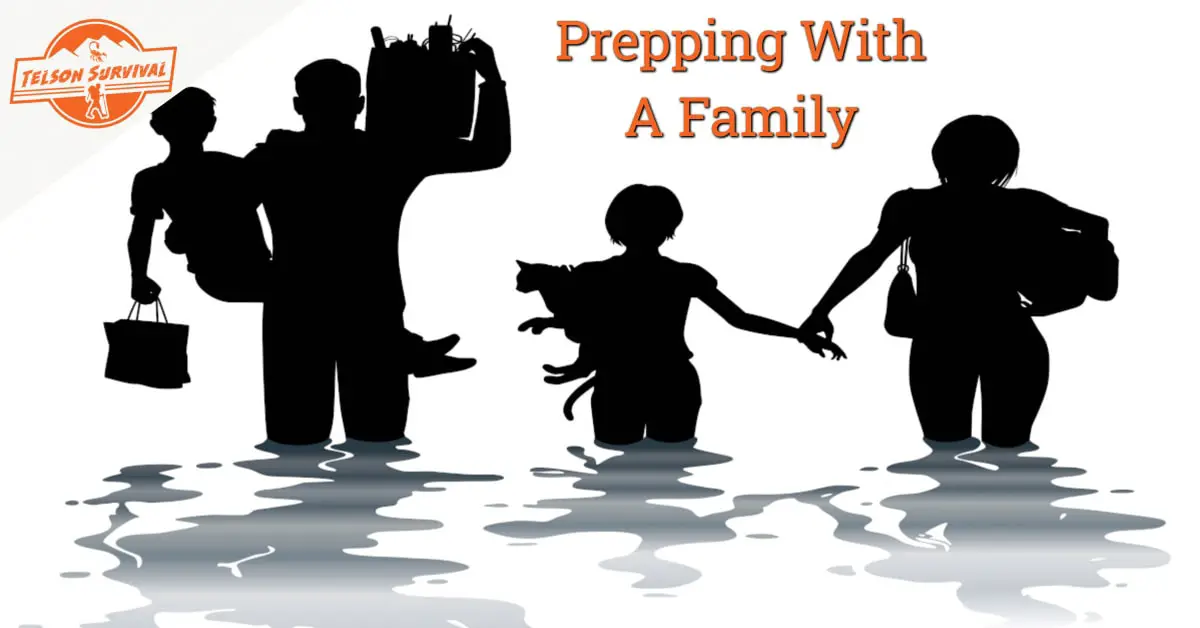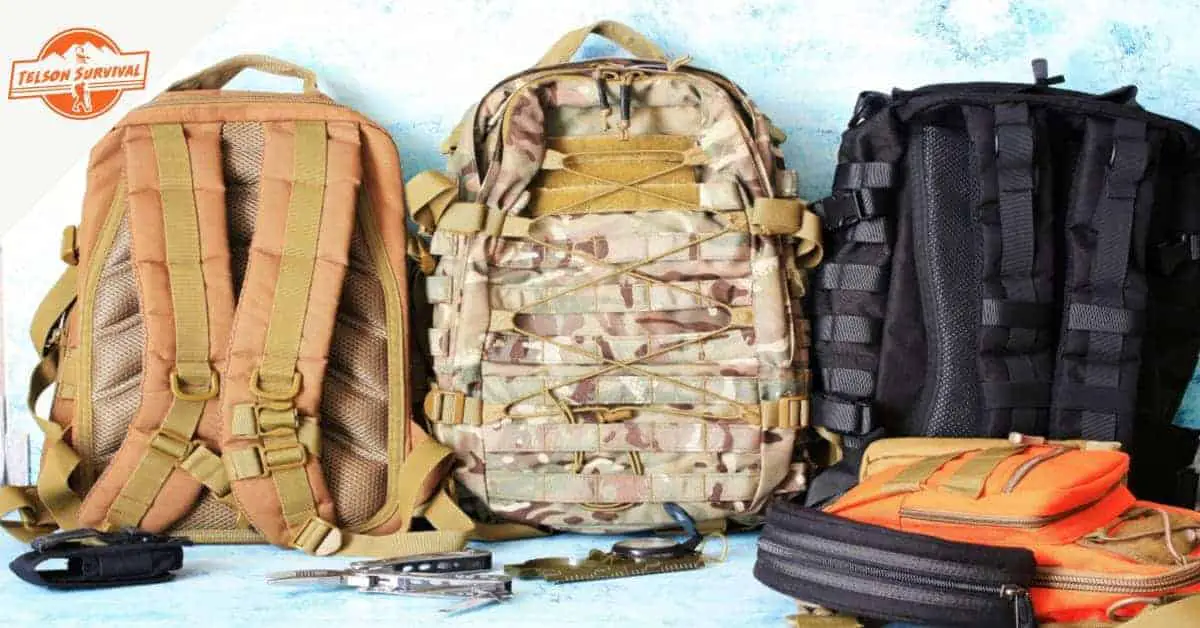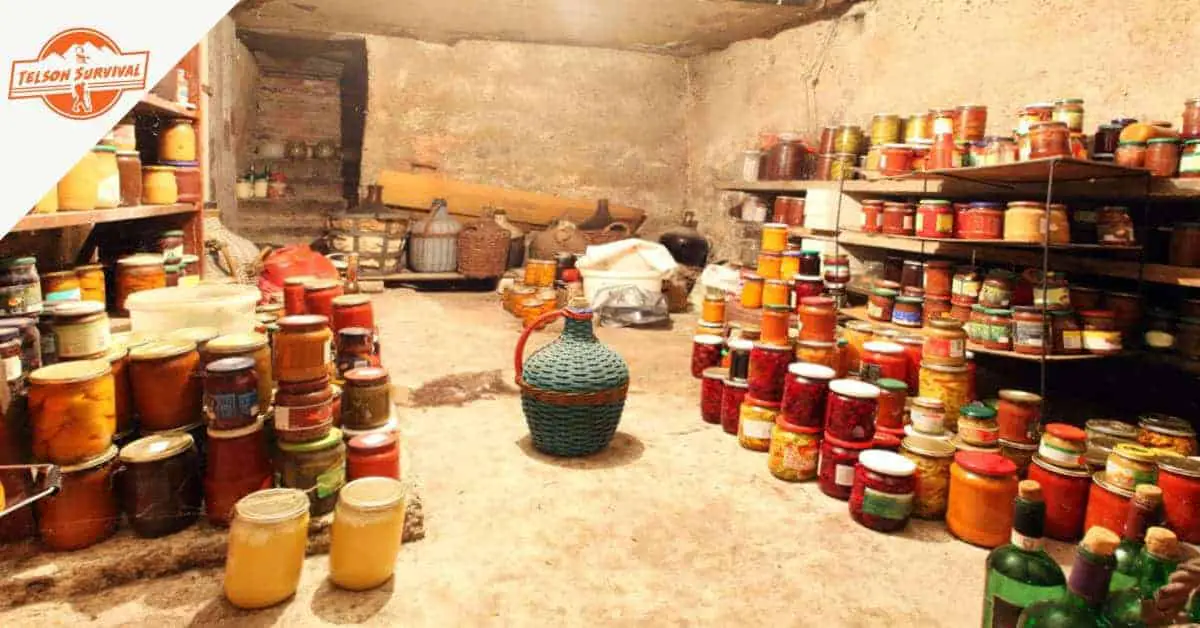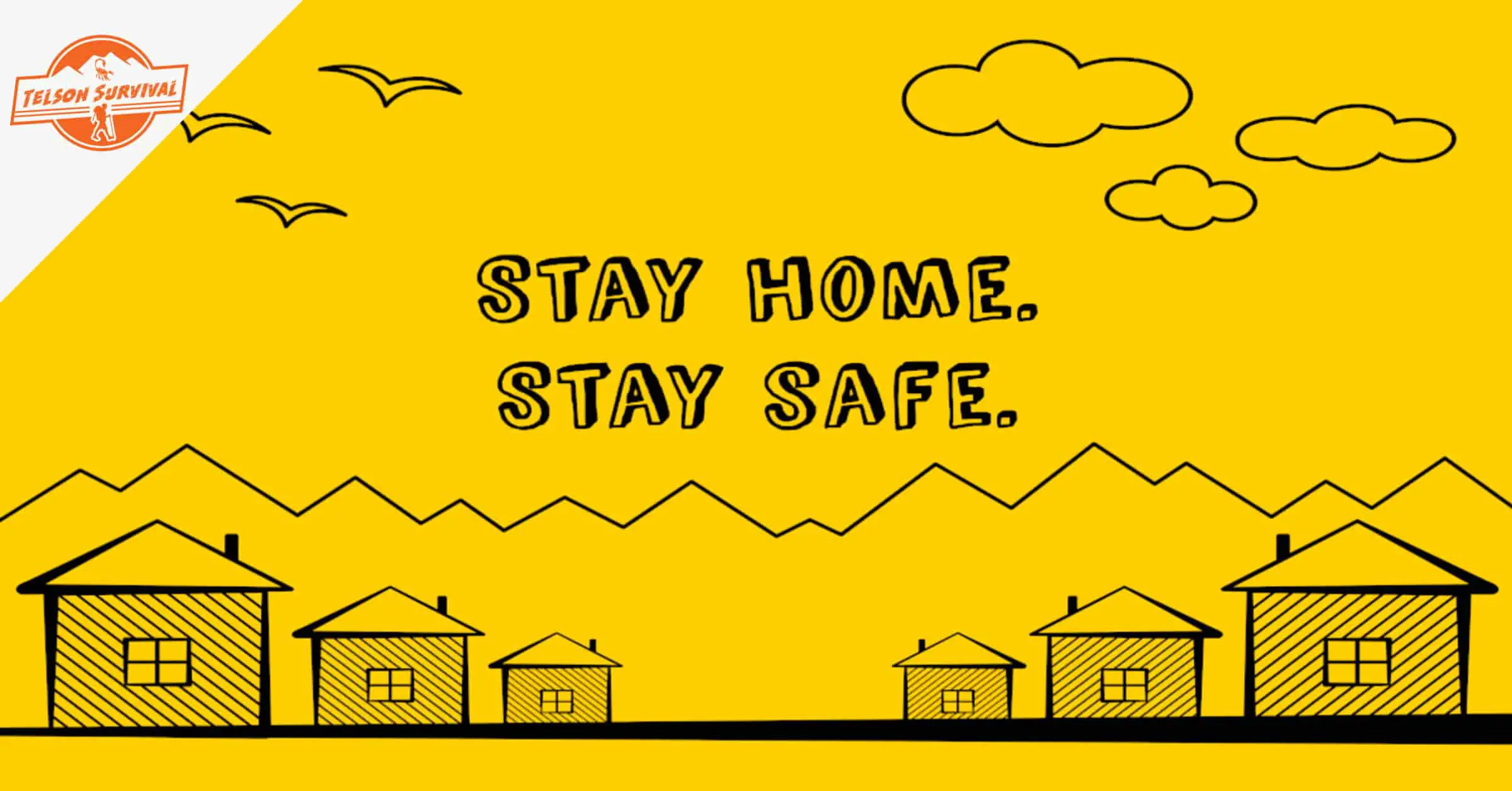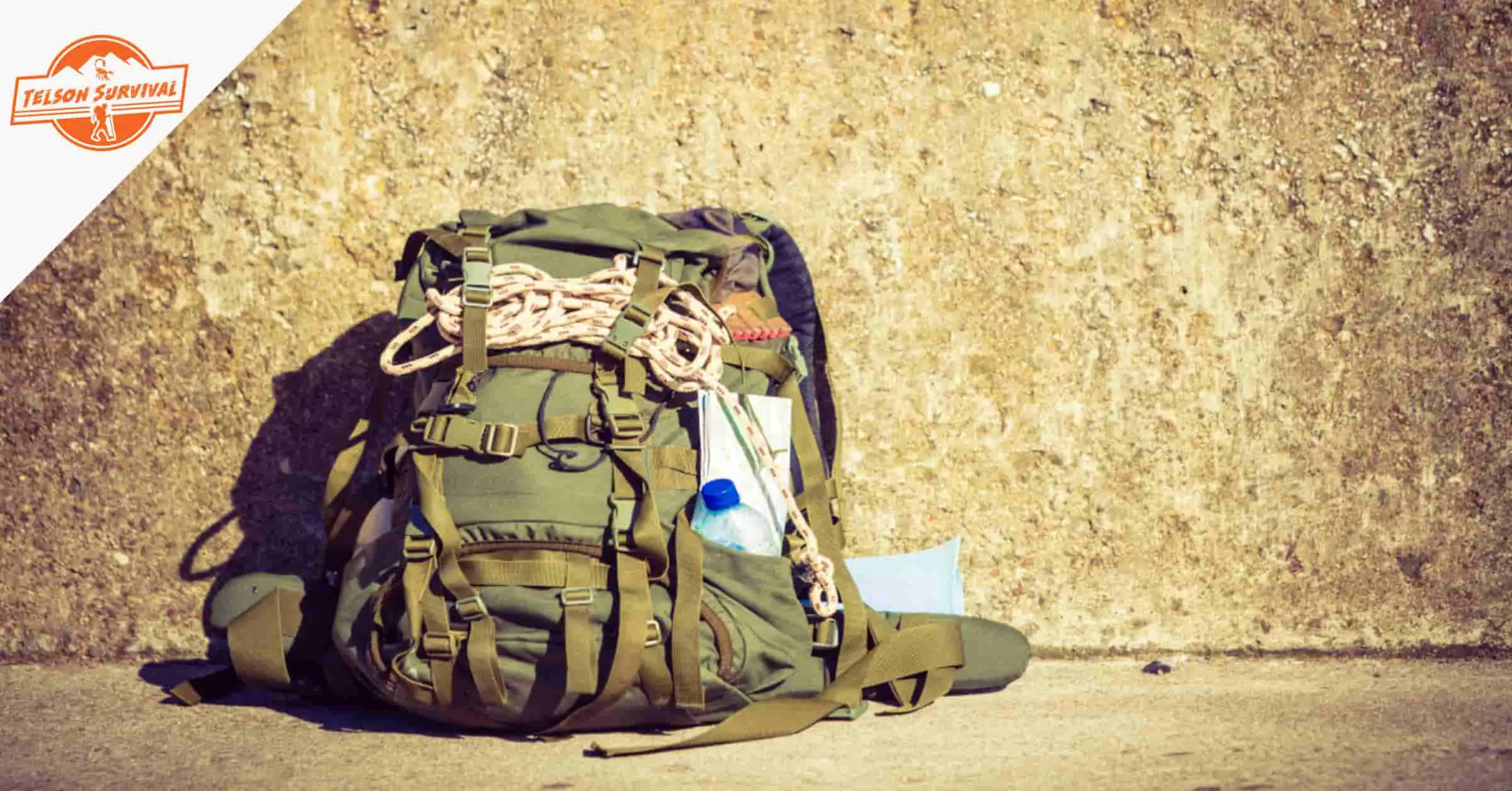Except for the few lone wolves out there who plan on slipping away into the wilderness when SHTF, most preppers have families to worry about. When you think about surviving an emergency, you probably plan on protecting your significant other, your elderly parents, your children, and even your pets.
Humans are tribal animals by nature, and it is in our instinct to protect those who are closest to us. There is a good reason for this, evolutionary speaking. Strength is found in numbers. When there are more of us working together and cooperating for survival, more of us survive. It is, in fact, considered by some anthropologists that civilization formed because of the human capacity to care for one another.
It is only natural that as a prepper, you are thinking about the well being of everyone in your inner circle. When you calculate how much food to stockpile, or build your medicine kit, you are considering the needs of everyone in your household.
But the specific question begs to be asked: What are the steps I should take to ensure my family's safety if SHTF?
The most important way to go about prepping with a family is to get your family involved! From the youngest member to the oldest, each person can get involved with prepping. Discuss emergency plans, practice drills, learn invaluable survival skills, and hone the talents that will make them an invaluable member of your survival team.
In this informative guide to prepping with a family, we are going to give you a step-by-step outline on how to create a personalized family survival plan. We'll go over everything including the special considerations you need to keep in mind and actionable steps to level up your prep and increase your family preparedness.
What is Family Preparedness?
Family preparedness is when your family has the skills, tools, and plans in place to be prepared for any emergency situation or for when SHTF. This looks different for each prepping family.
To get started preparing for your family, the most important step is to make a thorough assessment of your particular circumstances. Ask yourself:
How many people are in my family? What are their ages?
This is a fundamental question to ask because it will influence pretty much every prep you make. The amount of food you stockpile, the quantity of gear and supplies you will need to purchase, what kind of gear and supplies you will be acquiring, etc. Everything has to do with meeting the basic needs of the core group of your family.
Does anyone have any special needs?
Medical conditions, physical or mental disabilities, allergies, or even simple matters like needing eyeglasses are very important considerations that need to be assessed for each individual (including your pets) to make a comprehensive family preparedness plan.
Do I have any pets I want to make special preps for?
You will most likely want to save your beloved dog or special cat when SHTF. If you are on a farm or have a small homestead, what special measures will you need to take to deal with livestock or small farm animals?
What are the most likely situations that I need to be preparing for?
You need to do a realistic assessment of the true risks and dangers that your family may face in your normal day to day life. Some places are prone to hurricanes. Others are susceptible to earthquakes or tsunamis. Extreme blizzards or flooding may be issues in certain areas. Wildfires are an ever present danger in many parts of the world.
If you are in the city, what are the chances of social unrest or riots? It is easy to fall into the idea of prepping for the zombie apocalypse, but the most probable SHTF scenario is actually something a bit more commonplace like a natural disaster or temporary social unrest. You need to define what SHTF looks like for you.
What is my day to day reality?
Your normal daily routine should be the underlying consideration in all of your prepping. Do you spend most of the time at work or school and away from your family? To the contrary, maybe you spend most of your days at home. What schedules do your kids have? Knowing the routines of each member of your family is essential for making a realistic and truly useful emergency plan.
Answering these questions and doing an honest assessment of your situation is the first step towards family preparedness. Knowing the answers to these questions will help you create an effective emergency preparedness plan that includes every member of your family.
The importance of a Family Emergency Preparedness Plan
You might wonder why it is important to develop an actual written emergency plan for your family.
Schools have tornado drills and fire drills. Every public building has an emergency fire escape route clearly marked. We see tsunami evacuation route signs along coastal highways. All of these are legally mandated emergency plans. The simple fact is that emergency plans save lives.
Drills, training, and written plans allow people to know what to expect in the case of a specific scenario. This sense of preparedness allows people to react calmly and confidently in the face of an emergency.
What to do if your family is not interested in Prepping
If your family is resistant to prepping, you may need to do a marketing makeover on how you present your prepping plan. Thanks to some popular TV shows, there is an unfortunate stereotype of preppers being extreme and a little out there. Some of us even get a little zealous when we talk about prepping to those who will listen, desperately trying to win over converts.
If your family thinks that you are prepping for the zombie apocalypse, it might be time to tone things down a bit (at least when it comes to convincing them to get involved).
A good time to sit down with your family is when there is a highly publicized disaster happening somewhere else in the world. There is nothing better than the current reality to illustrate why prepping is important for a reluctant loved one. Sit with them, explain your concerns, and ask for their willingness to participate in developing a family survival plan.
If they are being stubborn and want nothing to do with organizing the household for an emergency, you will just have to prep without their involvement. Continue to include them, just don’t expect active participation.
For example, when you create a bug out bag for everyone in the household, simply point them out to everyone and let them know where they are. Make sure your significant other knows where your important documents are stashed. They may roll their eyes at you in the moment, but come an emergency, they will probably remember where they are.
You can do this with every prep you make. If something were to happen, they will thank you for it later.
How do you make a Family Preparedness Plan?
When it comes down to making an actual plan to prepare your family for any disaster, we recommend that you take the following steps.
1. Complete an assessment by answering the questions that we discussed above. Identify the most likely emergency scenarios that your family may experience and analyze each person’s circumstances to make the best prepping decisions for each individual.
2. Create a plan to build your family preparedness plan. Sounds silly, we know, but it is really important to be strategic about bringing your family preparedness plan to life. It is impossible to do everything at once. You need to decide which preps are your top priorities and which ones can wait.
2. Analyze your financial needs, and create a budget. Be realistic and strategic when it comes to your investments in food, gear, and prepping supplies. Don’t forget to create a strategy for saving.
3. Organize your plans. Some people like to have a special binder prepared with all of their plans and emergency procedures written down. Other people prefer to have a waterproof or fireproof lockbox to store their valuable information and emergency plans. Others are fine with a simple notebook. Decide what works best for you and figure out how you are going to organize your information.
What should be included in a Family Disaster Plan?
Every family's emergency preparedness plan will look different, though they should all cover the same ground. There are many different aspects of a family disaster plan that you will need to think about.
As a prepper, you know it is important to be prepared for every type of scenario. This is why it is recommended that you create two types of family disaster plans.
Bugging In Family Survival Plan
Hunkering down is often the best solution for weathering an emergency, particularly if you have a large family, young children, or family members with a disability. You should discuss how your family can bug in safely depending on the scenario.
The important information to review if you bug in includes:
- The location and proper handling of shutoff valves to water, gas lines, and other public utilities.
- Food and water preparation and rationing.
- Emergency procedures relevant to specific disasters such as tornadoes, earthquakes, social unrest, etc.
Bugging Out Family Survival Plan
Many emergencies, like wildfires, hurricanes, or flooding require swift evacuation. If you need to bug out with a family, you need to know exactly how you are going to do so.
It is important to have contingency plans in place for when plan A (or plan B) proves to be impossible. Discuss with your family different scenarios and procedures for the distinct emergencies most likely to occur where you live.
The important information to review in case you bug out includes:
- The bug out location. Is it a shelter, hospital, out-of-state relative’s house, etc.?
- How are you bugging out? Will you be traveling in a vehicle? On foot? What is the route you will take to the bug out location?
- Your bug out bags, where they are stored, and their contents.
Whether you are bugging out or bugging in, there are other ‘plans within plans’ that you need to have organized to ensure the safety and wellbeing of your family.
Incorporate the following plans within your broader family disaster plan strategy.
Family Survival Plan Basics
Important Paperwork
Make sure you have copies of all your important paperwork organized and handy in one place (or more than one place - it is never a bad idea to have backups). This should include banking information, insurance paperwork, identity documents, and a list of important passwords for online accounts.
Contact Information
All of the names, phone numbers, email addresses, and physical addresses for each member of your family need to be organized and printed out. This information needs to be strategically available to each person. Place a copy in each bug out bag, get home bag, or in each vehicle.
Communication Plan
If cell phone service goes down, how will you get in touch with your family? There are many ways to organize a communication plan for emergencies. Specific plans may include maintaining a landline phone number, designating a meet up location, using handwritten notes, using handheld radios, or counting on social media.
Financial Reserves
As with most preps, this will look different for everyone. It is generally considered good prepping to have a sizable emergency fund put up in the bank to handle unforeseen emergencies. However, you may also choose to have a stash of gold hidden away. In a bug out situation, you may opt for a pre-paid credit card or a wad of cash in your BOB. You may also want to have money hidden away at your bug out location.
Emergency Food Supplies
Stockpiling food for your home is an obvious step towards preparedness. To start out, plan for a two week supply of emergency food for each member of your family. Then, build up a three month supply of non perishable food, eventually building up a stockpile that will hold you through six months to a year. Think about food options for your BOB, your get home bag, survival caches, or bug out location.
Emergency Clothing
Depending on the emergencies you could potentially face, you may want to have rain gear, waders, rubber boots, wool hats, extra long underwear, or coveralls stashed in your emergency gear.
Personal Defense
Every good emergency survival plan includes provisions taken to protect your personal safety. If you choose to have firearms, everyone should know how to safely use them, maintain them, store and transport them. If you will be using a non lethal self defense tool, like pepper spray, make sure everyone knows how to fire it.
Reunification Plan
If your family spends most of the days spread out between work and school, your emergency plan needs to include guidelines on how you will find each other. Will you reunite at home? Do you count on a bug out location? Who will get the kids from school? This is one of those areas where you will most likely want to develop a backup plan for your backup plan.
Prepping Plan for 2 People
Prepping for two people is a lot easier than prepping for a larger family. The costs are less, your food will stretch further, and if you have to bug out you will be more agile and mobile when it comes to overcoming obstacles.
The advantage of having two people in your survival group is that you can work as a team. Identify each other's strengths and weaknesses. Consider training together so that you are both aware of each other's physical capacities.
Whether you are partners, siblings, or simply good friends, prepping with at least one other person will provide you an extra level of safety and peace of mind. It is always a good idea to have someone watching your back.
In case your significant other is pregnant, or you're forced to bug out with babies or toddlers, we recommend you have a look over our dedicated guide on prepping for pregnant women and small children.
Prepping Plan for 4 People
When you have a larger group of people, it is ideal that everyone is actively involved in the prepping.
When it comes to building up your emergency survival food supply, you will need to pay special attention to how many calories you are packing away. It is important that you actually do the math on calorie counts. What may seem like an excessive amount of food may, in fact, only be a two week supply for four people.
If everyone is involved in preparing a family survival plan, sign up for activities together that will help you strengthen your capacity to work in a team while strengthening your survival skills. Each person must understand the role that they have within the group. One person will usually stand out as the leader, another may be particularly skilled at first aid. Yet another might be physically stronger than anyone else in the group. You get the idea.
It is also wise to make a habit of casually discussing ‘what if’ scenarios. This will give each of you a sense of how the people in your group think and how they might react under stress. These conversations are like mental drills and allow each person to discuss their perspective and point of view before it is a life and death scenario.
Decide who is going to be responsible for what gear in a bug out situation, and assign duties for hunkering down. Remember, communication is the key to survival in a group.
If the family is not involved or interested in prepping with you, your prepping plan will be a little different. You need to be prepared to take charge when the moment comes. Anticipate the needs and capabilities of the others in your group. For example, If you know that someone in your group is particularly out of shape, you will need to keep that in mind when creating a bug out plan.
Family Survival Planning with Kids
When you have kids, survival planning takes on a whole new level of importance. As parents, we would do anything to protect our children. A family emergency preparedness plan is fundamentally important if you have kids at home.
That being said, having kids creates certain difficulties when SHTF.
- Infants and babies may need diapers or formula and will require being carried if you need to bug out on foot.
- Older children may not have the strength and physical resistance to tolerate extreme conditions such as cold or heat.
- Their physical size makes them more vulnerable in situations with high winds or flooding.
- They will be more emotionally susceptible to trauma and shock.
- Younger children are not quite capable of contributing significantly to the physical load of surviving. They cannot carry much weight and they have less stamina.
So what is a prepper to do when they are prepping with kids?
We recommend that you design your survival plans to favor hunkering down and bugging in. This will eliminate many of the difficulties associated with protecting our children when SHTF.
You will still need a bugging out survival plan, though. Make sure to anticipate each child’s capabilities and special needs when creating your plan. Bugging out in a vehicle is obviously favorable to bugging out on foot. Each child should practice carrying their bug out bag before it is a life saving necessity.
The advantage of prepping with children is that they are usually willing to prep alongside their parents or caregivers. You can (and should) regularly run drills and practice survival skills that are age appropriate. Turn prepping into a game and they will learn anything you teach them.
For more info and tips on how to prepare your children for survival in case of emergencies or disasters, check out our dedicated guide on prepping with young children.
Family Survival Planning with Elderly Family Members
When it comes to protecting our elderly family members, we generally recommend doing everything possible to bug in and stay at home. Bugging out will be a challenge with an elder in the home, especially if they have health problems or issues that affect their mobility, sensory awareness, or cognitive function.
However, there are many disasters and emergency situations where bugging out is necessary. Depending on the individual’s capabilities and special needs, you may need to be prepared to look to the larger community for assistance if evacuation is necessary.
At a minimum, make the following preps:
- If the individual has very limited mobility, investigate the community resources available for evacuation assistance. Oftentimes, there are specialized medical refuge centers. You may need to register your elderly person for these services in advance.
- Keep a backup supply of all the medicines and supplements they take. A one month supply is usually enough. To avoid them expiring, rotate through them constantly.
- Obtain a backup pair of glasses, extra hearing aid batteries, or adult diapers if they are necessary.
- For bugging in, invest in a generator or small battery backup for any specialized medical equipment they need that requires electricity.
- Prepare a bug out bag with all the necessary meds, documents, and insurance information to accompany them if they are evacuated to a specialized facility.
- Pay attention to their dietary needs when stockpiling emergency food supplies.
- Remember to keep your elderly family member informed of what is going on around them. Sudden changes and uncertainty can be very upsetting for anyone but can be especially difficult for this demographic.
Prepping Plan for your Pets
For many people in this day and age, our pets are like our children and we simply cannot fathom leaving them behind or letting them be exposed to danger. This is why you need to include your furry friends in your family survival plan.
First off, most people are concerned about their cats and dogs. However, if you have children in the home, you may also need to plan for a guinea pig, hamster, snake, ferret, or even fish. If you live on a farm, you will want to come up with a plan to deal with larger animals such as horses, cows, or chickens.
Here are a few preps that you can make to keep your pets safe during a disaster.
- In your home, stockpile feed, medicines, and other necessary supplies that your pet will need for bugging in.
- Create a BOB for your pet that includes food, medicines, extra water, and a toy.
- If you can, have an animal carrier handy for easy transportation of your pet if you need to leave. Make sure your pet is trained to use it.
- Take a picture of each animal and have it printed off with a complete copy of their vaccination and medical record. Keep a copy of this in your important documents, and keep a copy in your pet's BOB.
- Make sure your bug out destination is animal friendly.
- Make sure that each animal has a collar with up-to-date identifying information.
- For larger animals, such as horses or other livestock, be sure to take a picture of each animal. Attach the picture to that animal's medical records and keep this information in your important paperwork.
- Stockpile veterinary medicines.
- Be prepared to assess each situation to determine whether larger animals should be evacuated, enclosed, or released into a pasture.
Unfortunately, many large animals are simply left to fend for themselves in natural disasters. Make sure to get in contact with your local agricultural extension offices to research the best options for your animals in the area that you live.
For an in-depth guide on how to care for you pets when SHTF, check out our guide for prepping with pets.
Do You Bug Out or Bug In with a Family?
When it comes to developing a family survival plan, the idea is to anticipate every possible scenario that could happen - and be prepared for it.
Through careful prepping, planning, and practicing you and your family will be able to confront each emergency situation with confidence. You will be able to weigh your risks, know your advantages, and make a decision about whether it is best to bug out or bug in with your family.
Because there are so many unknowns, we preppers have to plan ahead and be ready for anything. With a comprehensive emergency family survival plan, you and everyone in your family will know exactly what to do. Get started making yours today.

